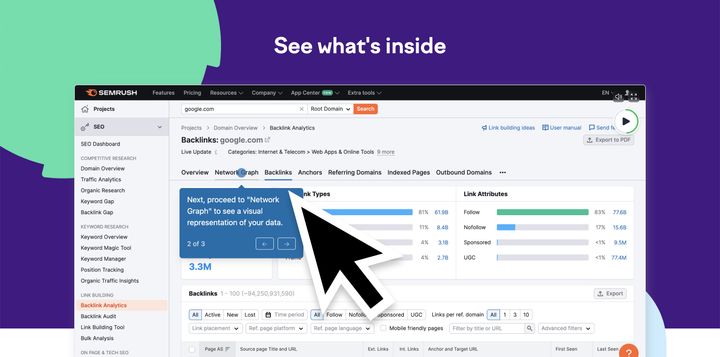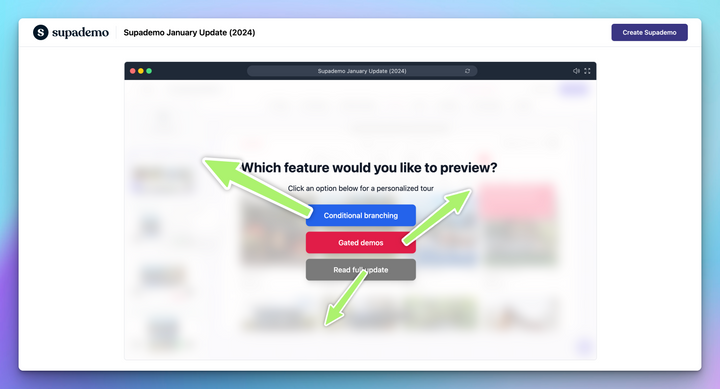In today's competitive business landscape, customer acquisition is a critical aspect of building a successful company. It involves attracting new customers, nurturing them, and ultimately converting them into paying customers.
This comprehensive guide will explore the fundamentals of customer acquisition, strategies to lower acquisition costs, and methods to leverage your existing customer base. By the end, you will have the knowledge and tools to develop an agile and effective customer acquisition strategy that will stand the test of time and changing market trends.
Understanding Customer Acquisition
Customer acquisition is enticing potential customers to purchase your products or services. It encompasses a series of steps, from attracting leads, nurturing them until they are ready to purchase, and finally converting them into customers. The overall cost associated with these steps is the customer acquisition cost (CAC).
The importance of customer acquisition cannot be overstated, regardless of the age or size of your business. Acquiring new customers generates revenue and showcases traction to external parties such as investors, partners, and influencers. It is a fundamental driver of business growth and keeps your company healthy and thriving.
Differentiating Customer Acquisition and Marketing
While customer acquisition and marketing are related, they serve distinct purposes. Marketing aims to build awareness and promote your brand, while customer acquisition focuses on driving action and converting potential customers into paying customers. Marketing activities create recognition, while acquisition activities drive revenue.
It's essential to understand the difference between lead generation and customer acquisition. Lead generation typically occurs at the top of the funnel, where potential customers become aware of your brand. Lead acquisition occurs in the middle of the funnel, where leads are nurtured and qualified. Lead conversion happens at the bottom of the funnel when leads become paying customers. Customer acquisition encompasses the entire funnel, from lead generation to conversion.
Customer Acquisition Channels
To effectively acquire customers, businesses utilize various channels to promote their products and services to new audiences. These channels can be categorized into different types, including organic search, organic social media, paid search, paid social media, email marketing, referrals, events, and traditional advertising. Let's explore each of these channels in detail.
Organic Search
Organic search refers to the search engine results pages (SERPs) on platforms like Google and Bing. To leverage organic search as a customer acquisition channel, businesses invest in search engine optimization (SEO). SEO involves optimizing your website and content to rank higher on search engine results. By utilizing tools like SEMRush, Open Site Explorer, and Ahrefs, businesses can identify relevant keywords and create compelling content that attracts potential new customers.
Paid Search
Paid search marketing, or pay-per-click (PPC) advertising, involves ads on search engines and partner websites. Platforms like Google Ads allow businesses to display ads alongside organic search results, increasing visibility and potential customers' chances of being found. Using tools like Google Keyword Planner and Microsoft Advertising, businesses can optimize their content and ads to perform well in search engine results.
Organic Social Media
Organic social media marketing builds brand awareness, develops a company personality, and shares valuable content with your audience. It involves creating and sharing engaging posts on platforms like Facebook, Twitter, and Instagram. Organic social media marketing is an opportunity to connect with your audience, inspire them to share your content and build a loyal following.
Paid Social Media
Paid social media marketing involves leveraging paid advertisements on platforms like Facebook, Twitter, and Instagram to target and attract potential customers. These ads can be highly targeted based on demographics, interests, and behaviours, ensuring your content reaches the right audience. Platforms like Facebook Lead Ads allow businesses to gather customer information like email addresses and names, facilitating lead generation and acquisition.
Email Marketing
Email marketing is a powerful customer acquisition channel that allows businesses to connect directly with their audience. By building an email list, businesses can send targeted emails containing valuable content, product information, discounts, and event invitations. Email marketing provides a direct line of communication with customers and enables businesses to nurture leads, promote their products, and maintain a strong relationship with their audience.
Referrals
Customer referrals are one of the most influential and cost-efficient customer acquisition methods. Encouraging satisfied customers to refer others to your business can bring in new customers who already have a positive impression of your brand. Implementing a referral program and offering incentives, such as credits, gifts, or monetary rewards, can motivate customers to share their positive experiences and refer others to your business.
Events
Events, whether in-person or virtual, provide a valuable opportunity to connect with interested prospects and acquire new customers. By participating in conferences, webinars, trade shows, or hosting your events, you can engage with potential customers, showcase your products or services, and build relationships. Virtual events have become increasingly popular, allowing businesses to reach a wider audience and capture leads by requiring registration with email addresses.
Traditional Advertising
Traditional advertising channels, such as TV, radio, and print media, are still relevant for customer acquisition, particularly for local businesses or those with larger marketing budgets. Traditional advertising can be highly effective when targeting specific audiences, and the publisher's media buying guide provides valuable information on audience demographics and requirements for publishing ads.
Customer Acquisition Strategies
Successful customer acquisition strategies combine various tactics to achieve desired results. Let's explore some practical strategies that businesses can employ:
SEO Content Marketing
Content marketing is a powerful customer acquisition strategy that involves creating and distributing valuable and relevant content to attract and engage potential customers. By publishing blog posts, ebooks, guides, and other types of content, businesses can establish themselves as industry leaders, build trust with their audience, and generate leads.
Utilizing SEO techniques, such as optimizing content for relevant keywords, improving website structure, and building high-quality backlinks, can enhance the visibility of your content in organic search results. This increases the chances of attracting potential customers and driving conversions.
Blogging
Blogging is an essential component of content marketing and an effective customer acquisition strategy. By regularly publishing informative and engaging blog posts, businesses can attract potential customers, establish thought leadership, and drive organic traffic to their websites. Blogs provide an opportunity to address customer pain points, answer frequently asked questions, and showcase company expertise.
To maximize the impact of blogging, it's crucial to conduct keyword research and optimize blog posts for relevant keywords. This helps improve search engine rankings and increases the visibility of your content to potential customers.
Social Media Marketing
Social media marketing is an integral part of customer acquisition strategies. Businesses can leverage social media platforms to build brand awareness, engage with their audience, and drive traffic to their website. Businesses can attract potential customers and nurture leads by posting relevant and engaging content, responding to customer inquiries, and running targeted ad campaigns.
It is important to choose social media platforms that align with your target audience's preferences and interests. By understanding your audience and tailoring your content to their needs, you can effectively engage with potential customers and drive conversions.
Video Marketing
Video marketing is an increasingly popular customer acquisition strategy. Businesses can create compelling video content to engage with potential customers, showcase products or services, and provide valuable information. Videos can be shared on social media platforms, embedded in blog posts, or used in paid advertising campaigns to attract and convert new customers.
To optimize video marketing efforts, businesses should create high-quality, engaging videos that resonate with their target audience. One effective way to achieve this is by using a free online video editor, which allows businesses to easily edit and enhance their video content. By incorporating storytelling, demonstrating product features, and providing educational content, businesses can effectively capture the attention of potential customers and drive conversions.
Email Retargeting
Email retargeting is an effective strategy for re-engaging potential customers who have shown interest but have not yet made a purchase. By sending targeted emails with personalized content, businesses can remind potential customers about their products or services and encourage them to take the next step.
Segmenting your email list based on customer behaviour and interests allows businesses to send tailored messages that resonate with potential customers. By providing valuable information, addressing customer concerns, or offering exclusive discounts, companies can effectively nurture leads and increase conversion rates.
Sponsored Content
Sponsored content involves partnering with influencers, publishers, or media outlets to create and distribute content that promotes your products or services. This strategy helps businesses reach new audiences, build credibility, and drive customer acquisition. Sponsored content can take various forms, including sponsored search results, sponsored product mentions, or paid blog posts on relevant publications.
When implementing sponsored content strategies, choosing partners that align with your brand values and target audience is essential. By leveraging trusted sources' reach and influence, businesses can attract new customers and drive conversions.
Customer Spotlights
Customer spotlights are a powerful acquisition strategy that showcases satisfied customers and their success stories. Businesses can build trust and credibility with potential customers by featuring customers who have had positive experiences with your products or services.
Customer spotlights can be case studies, testimonials, reviews, or user-generated content. By highlighting the benefits and value your products or services provide, businesses can inspire potential customers to take action and become paying customers.
Gated Content
Gated content refers to valuable and in-depth content that is accessible to potential customers in exchange for their contact information, such as email addresses. By offering ebooks, white papers, templates, or exclusive content behind a registration form, businesses can generate leads and nurture them through the customer acquisition funnel.
To effectively utilize gated content, it's essential to create high-quality and relevant content that addresses potential customer's pain points or provides valuable insights. Businesses can build trust and establish relationships with potential customers by demonstrating expertise and providing value upfront.
Product Pricing
Product pricing is an often-overlooked customer acquisition strategy. By strategically pricing products or offering discounts, businesses can attract new customers and incentivize them to purchase. Pricing strategies like promotional, discount, or freemium pricing can effectively drive customer acquisition.
When implementing pricing strategies, it's essential to consider the perceived value of your products or services, competitor pricing, and your target audience's price sensitivity. By finding the right balance between affordability and profitability, businesses can attract new customers and drive conversions.
Measuring Customer Acquisition
To evaluate the success of your customer acquisition efforts, it's essential to measure key performance indicators (KPIs) and track your customer acquisition cost (CAC). Measuring these metrics allows businesses to assess the effectiveness of their strategies, optimize their marketing efforts, and set realistic goals.
Customer Acquisition Cost (CAC)
Customer acquisition cost (CAC) is the total cost of acquiring a new customer. It includes all marketing and sales expenses, including advertising costs, campaign expenditures, salaries, and overhead. Calculating your CAC helps you understand how much you spend acquiring each new customer.
The formula for calculating CAC is:
CAC = (Total Marketing and Sales Expenses) / (Number of New Customers Acquired)
By monitoring and analyzing your CAC, you can identify areas for improvement, optimize your marketing spend, and increase the efficiency of your customer acquisition efforts.
Key Performance Indicators (KPIs)
In addition to CAC, businesses should track and analyze various KPIs to evaluate the performance of their customer acquisition strategies. Some important KPIs to consider include:
- Conversion Rate: The percentage of leads or website visitors who become paying customers.
- Return on Ad Spend (ROAS): The revenue generated from advertising campaigns relative to the amount spent.
- Customer Lifetime Value (CLTV): The total revenue generated from a customer's entire relationship with your business.
- Cost per Lead (CPL): The average cost of generating a new lead.
- Click-Through Rate (CTR): The percentage of people who click on an ad or link compared to the total number of impressions.
By regularly monitoring and analyzing these KPIs, businesses can identify areas of improvement, make data-driven decisions, and optimize their customer acquisition strategies.
Developing an Effective Customer Acquisition Strategy
Businesses should follow a systematic approach to develop an effective customer acquisition strategy. Here are the key steps to consider:
Identify Your Target Audience
Understanding your target audience is crucial for developing an effective customer acquisition strategy. Conduct market research, analyze your existing customer base, and create customer personas to gain insights into their demographics, preferences, pain points, and motivations. This information will guide your marketing efforts and help you tailor your messaging to resonate with potential customers.
Define Your Goals
Clearly define your customer acquisition goals. Determine the number of new customers you want to acquire within a specific timeframe and set key performance indicators (KPIs) to measure your progress. Your goals should be specific, measurable, achievable, relevant, and time-bound (SMART).
Plan Your Campaigns
Based on your target audience and goals, develop a comprehensive marketing plan that outlines the channels, tactics, and resources you will utilize to acquire new customers. Consider the customer acquisition channels discussed earlier, and identify the most effective strategies for reaching your target audience. Develop a timeline for launching your campaigns and allocate resources accordingly.
Track and Optimize Performance
Track and analyze your marketing campaigns' performance regularly. Monitor your KPIs, such as conversion rates, click-through rates, and customer acquisition costs. Use this data to identify areas for improvement, optimize your marketing spend, and refine your messaging and targeting. Continually test and experiment with different strategies to find the best for your business.
Nurture Customer Relationships
Customer acquisition is not just about acquiring new customers; it's also about building long-term relationships. Once you acquire a new customer, focus on providing exceptional customer service, delivering value, and fostering loyalty. Implement strategies to retain customers, encourage repeat purchases, and generate positive word-of-mouth referrals.
Conclusion
Customer acquisition is a fundamental aspect of building a successful business. By implementing effective customer acquisition strategies, companies can attract new customers, nurture leads, and convert them into paying customers. It's essential to utilize a mix of channels, such as organic search, social media, email marketing, and referrals, to reach potential customers at different stages of the customer acquisition funnel.
Measuring key performance indicators, including customer acquisition cost (CAC) and conversion rates, allows businesses to evaluate the effectiveness of their strategies and optimize their marketing spend. Companies can achieve sustainable growth and long-term success by continually tracking performance, refining strategies, and nurturing customer relationships.
Remember, customer acquisition is an ongoing process that requires constant adaptation and improvement. By staying informed about market trends, consumer behaviour, and emerging technologies, businesses can stay ahead of the competition and continue to attract and convert new customers.




